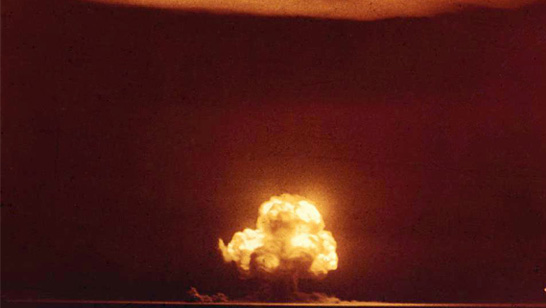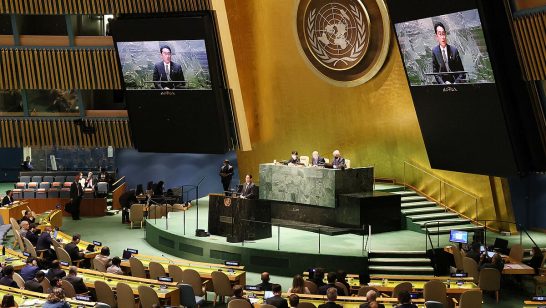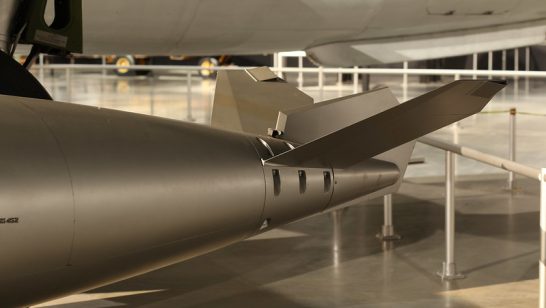
Without a doubt, the Treaty on the Non-Proliferation of Nuclear Weapons (NPT) has cemented its place as the cornerstone of the global non-proliferation regime. Referring to the NPT as the cornerstone is one of the few things that NATO and ICAN agree on, albeit for different reasons. The Former UN Secretary-General, the late Kofi Annan, even went further to hail the NPT as a “true cornerstone of global security”, as has every UN Secretary-General after him. It is obvious that the NPT is of great significance to global security, but the notion of a ‘cornerstone’ is a rather specific characterisation that the NPT enjoys. This specificity begs the question: what really is a cornerstone?
As a contemporary expression, the cornerstone of something refers to a basic feature on which a particular thing depends. So when the US State Department refers to the NPT as “the cornerstone of the nuclear non-proliferation regime and the basis for international cooperation to prevent the spread of nuclear weapons”, ‘cornerstone’ can be understood within the context of contemporary usage.
In masonry, a cornerstone is traditionally the first stone laid for a structure, which orients a building in a specific direction. After a cornerstone was laid, the rest of the building could be structured around it. This is a tradition that has existed for millennia, with variations in ancient Mesopotamian, Egyptian, and Greek cultures.
The NPT has been a cornerstone upon which the rest of the global non-proliferation architecture has been developed. The emergence of the Treaty on the Prohibition of Nuclear Weapons (TPNW), and the near-global acceptance of safeguards, can be traced to Articles VI and III of the NPT. And the NPT’s three pillars have provided some stability, even as the torrents of great power adversity have threatened to erode the facade of security through deterrence.
The NPT has been a cornerstone upon which the rest of the global non-proliferation architecture has been developed. The emergence of the TPNW, and the near-global acceptance of safeguards, can be traced to Articles VI and III of the NPT. Olamide Samuel
Yet, at the same time, the NPT marks the site where illustrious dreams lay buried. The 13 practical steps on non-proliferation and disarmament, crafted in the 2000 RevCon, remain mostly unfulfilled alongside the 64-point action plan forged a decade later. Now, the idea of consensus outcomes emerging from any NPT RevCons increasingly appears to be the next casualty as we return to the cornerstone once more to bury another illustrious dream.
A cornerstone’s significance is judged by its ability to eventually support and orient a building in a specific direction. But, a cornerstone without a building, a stone that primarily signifies the burial place of entities, is a headstone. It is, therefore, interesting that in the 1700s the word headstone evolved out of the frequent use of ‘cornerstone’, to refer to a burial site.
The 2022 RevCon produced a glimmer of hope when the decision was taken to have discussions on further strengthening the review process. Thanks to the decades-long efforts of numerous non-governmental organisations and certain states, some state parties now recognise that the NPT’s striking feature is its institutional deficit. The Working Group established to discuss further strengthening the review process of the NPT is a result of this long-overdue recognition.
During his lifetime, Jayantha Dhanapala, President of the 1995 Review and Extension Conference, opined that “the NPT would indeed benefit from the establishment of some permanent institutional infrastructure to deal with both routine and important issues that arise between the various five-year Review Conferences”.
In the years that followed, numerous proposals have been put forward to erect some form of institutional structure around the NPT. Some proposals have been quite ambitious, calling for the establishment of a General Conference, Executive Council, or Secretariat. Doubts have been cast regarding the feasibility of the more ambitious plans due to problems that could arise if these plans overlap with existing functions of the IAEA, the Security Council, and the First Committee of the UN General Assembly.
However, there are now proposals which are comparatively more measured. Most call for the formalisation of a bureau to allow for greater continuity across review cycles. Some call for the establishment of a Treaty Support Unit (TSU) to substantively, administratively, and logistically facilitate NPT meetings, and aid treaty work in the intersessional periods.
The particularly tumultuous international security environment today requires that we strive to replicate the ambition and craftsmanship of the finest diplomatic qualities demonstrated by our predecessors. With this in mind, I strongly suggest that we collectively work towards realising these recent proposals – they are feasible and truly are in our collective interest. We have a unique opportunity to protect the NPT as the cornerstone of the global nuclear non-proliferation regime, a cornerstone that Jayantha fought so hard to preserve in 1995.
The opinions articulated above represent the views of the author(s) and do not necessarily reflect the position of the European Leadership Network or any of its members. The ELN’s aim is to encourage debates that will help develop Europe’s capacity to address the pressing foreign, defence, and security policy challenges of our time.



